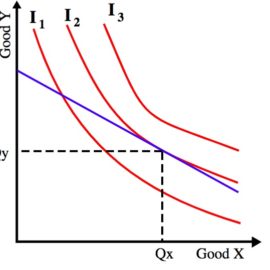

This article is an excerpt from the Shortform book guide to "The Surrender Experiment" by Michael A. Singer. Shortform has the world's best summaries and analyses of books you should be reading.
Like this article? Sign up for a free trial here.
What is the monkey mind? What causes it? How can you tame your monkey mind?
Michael Singer is an American spiritual teacher, motivational speaker, and author. Through the lifelong practice of meditation and yoga, Singer recognized his unwanted mental chatter—his monkey mind—and described advice for silencing it in his book The Surrender Experiment.
Keep reading to learn more about what the monkey mind is and how to tame it, according to Singer.
What Is the Monkey Mind?
Before Michael Singer had his insights about surrendering to the flow of the universe, he was a typical college student whose annoying inner voice led him to meditation. In his book The Surrender Experiment, he explains what the monkey mind is and techniques for taming this unconscious mental chatter to live more peacefully.
His surrender story begins in Gainesville, Florida in 1970. He describes his younger self as a “hippie” who was less than serious about his education and for some time lived in a Volkswagen van. He didn’t have a clear vision for his life and felt aimless at times. But a single event set his life on a whole new trajectory that he’s remained on to this day. This was an otherwise unremarkable experience, and yet it had a profound and permanent effect on his life.
During a conversation with his brother-in-law, an awkward silence caused Singer to mentally search for conversational topics to fill the lull. He then noticed that he was doing that in his mind, and found himself reflecting on his own thought process. This was the first time he’d ever consciously observed his own internal monologue, and he became fascinated with exploring that further. After that conversation, Singer began to regularly and consciously observe his own thoughts and to reflect on the distinction between his unconscious mental chatter and the part of himself that was noticing the chatter. He had the sense that his true self was the one recognizing the voice, not the chattering voice itself, and the more he noticed the chatter, the more he became annoyed by it and wanted to silence it.
So, what is the monkey mind? In Buddhism, the “monkey mind” refers to the unwanted mental chatter you experience, using the metaphor of a restless monkey swinging constantly from branch to branch as a way to illustrate your constantly shifting thoughts.
(Shortform note: Buddhism makes the distinction between your thinking mind and your observing mind. Both of these are parts of your mind, but the mind that observes the thoughts is the one we’re less in touch with. Mark Manson, the author of The Subtle Art of Not Giving a F*ck, says in order to deal with negative emotions like fear and anxiety, we must learn to disidentify with the thinking mind. In other words, don’t think of those fearful thoughts as you; just recognize them as being there in your mind and then let them go.)
After a conversation about this battle with his internal monologue, a friend gave Singer a book on Buddhism called The Three Pillars of Zen. He was amazed to find that the book discussed these very concepts he’d been pondering. It explained that meditation is a method for quieting the monkey mind and creating a more peaceful internal experience. So, Singer set out to learn to meditate. This became the driving force of his life from that day forward.
Taming the Monkey Mind
As we explained before, unconscious mental chatter is sometimes referred to in Buddhism as the monkey mind (a restless, swinging monkey). This constant movement renders us unable to concentrate and have mental peace and stillness. But, as Singer would come to realize, we can’t banish the monkey mind entirely. We must learn how to train it so it behaves in a tamer way and learn to live peacefully with it. This is the primary goal of meditation in Zen Buddhism.
In addition to classic sitting meditation, some other methods you might use to tame the monkey mind are:
- Moving meditations, such as yoga, Tai Chi, and Qigong
- Avoidance of stimulants that can agitate the monkey mind, such as caffeine, sugar, and alcohol.
- Listening to music with binaural beats
Practice Self-Realization
Singer initially approached meditation as a tool for disciplining his mind, and he was fairly successful at it. But he eventually came to realize that meditation also involves a process of self-realization, the experience of deeply knowing one’s true self.
(Shortform note: In Mindfulness in Plain English, Henepola Gunaratana says that through the practice of mindfulness meditation you can become more deeply aware of the negative emotions you tend to repress. By doing so, you can learn to detach from them and let them go, rather than having them obscure your true self.)
To tame the monkey mind, you can also practice the techniques Singer learned from The Three Pillars of Zen. For Singer, these involved sitting quietly, observing his breath, and mentally repeating the sound “mu.” He began doing this for a few minutes a day, then gradually increased the time commitment until he was in the habit of meditating for hours every day. On occasion, during meditation sessions, he had intense feelings of universal love that were more deeply fulfilling than anything else he’d ever experienced. He soon recognized that he wanted his life to be devoted to spiritual practice, so he could access this feeling regularly.
Singer decided the best way to accomplish this was to have as much solitude as possible. He bought a plot of land in the forest of Alachua, Florida where he built a small home and meditation sanctuary. At the time, his goal was to have complete solitude, to be able to devote himself entirely to his internal work.
He established a rigorous schedule of rising at 3:00 am and practicing meditation for several hours every day. After practicing this regimen in solitude on his land for the next year and a half, he noticed his monkey mind becoming more disciplined. But he was frustrated that he still struggled to consistently achieve that blissful experience of universal love. Then another book came to him: Autobiography of a Yogi opened Singer’s eyes to the fact that there was more to a spiritual life than just mental discipline. He was lacking self-realization, a deeper understanding of his own mind.
This book’s insights led him to conclude that it would be impossible to silence his inner voice unless he really understood that voice as part of himself. Up until this point he’d been so focused on just getting rid of the chatter, he wasn’t paying any attention to the content of it. If he was going to permanently quiet his mind, he’d need to figure out why it was so noisy. This would allow him to get to the root of the issue. So he shifted his goal from trying to eliminate his inner voice to trying to actually listen to it.
| Autobiography of a Yogi on Self-Realization Paramahansa Yogananda, the author of Autobiography of a Yogi, describes self-realization as knowing yourself well enough to understand that you are not your ego (the chattering voice), but rather that you are one with God. He teaches the importance of self-realization through kriya yoga, which focuses on breath control in order to achieve self-control and attain “God-realization,” or union with the divine. Yogananda is sometimes referred to as the “Father of Yoga in the West” because he was one of the first Hindu yogis to bring yoga to America when he arrived in Boston in 1920. His teachings emphasized the unity of all the world’s religions, and that the benefits of yoga didn’t depend on religious belief. He created a series of lessons he called the Self-Realization Fellowship and is said to have taught and initiated over 100,000 people into this fellowship in his lifetime. In 1946, after decades of teaching and spreading yoga and meditation, Yogananda wrote his life story, Autobiography of a Yogi. |

———End of Preview———
Like what you just read? Read the rest of the world's best book summary and analysis of Michael A. Singer's "The Surrender Experiment" at Shortform.
Here's what you'll find in our full The Surrender Experiment summary:
- The story of how a hippie college kid became a wealthy CEO
- How to make your life exactly as the universe wants it to be
- How to free your mind from limiting thoughts, emotions, and energy






